Originally published on JUL 6, 2023
Myth: Solar and wind are helping save our grid from extreme heat caused by fossil-fueled climate change.
Truth: Preferences for solar and wind have made our grid embarrassingly vulnerable to heat waves—and cold snaps—that a fossil-fueled grid could easily manage.
-
A recent Bloomberg story, “In Texas Heat Wave, Air Conditioners Keep Humming on Renewable Power” captures an increasingly popular argument: fossil-fueled climate change is causing overwhelming heat waves, while solar and wind are coming to the rescue with abundant electricity.
All wrong.1
-
Myth: Fossil-fueled climate change is causing heat waves that our grids will inevitably have trouble handling.
Truth: The amount of warming that has occurred—about 2°F in 100 years—wouldn't challenge a grid fueled by fossil fuels and other reliable, resilient fuel sources.
-
The wide-ranging potential for extreme heat in California or Texas and the extreme cold potential in Texas every few decades is far greater than the slow-moving changes in climate. An extreme heat wave and high electricity demand in summer are not unexpected for grid planners.
-
Around the world, countries use fossil fuels to deliver reliable electricity under heat and cold extremes beyond what we face in the US.
As the wealthiest country in the world, obviously, the US could replicate this.
The cause is obviously something other than fossil fuels.
-
An example of fossil-fueled electricity thriving in extremely hot weather: Singapore, which has both growing electricity demand and temperatures comparable to those of African countries like Chad and the Ivory Coast.2
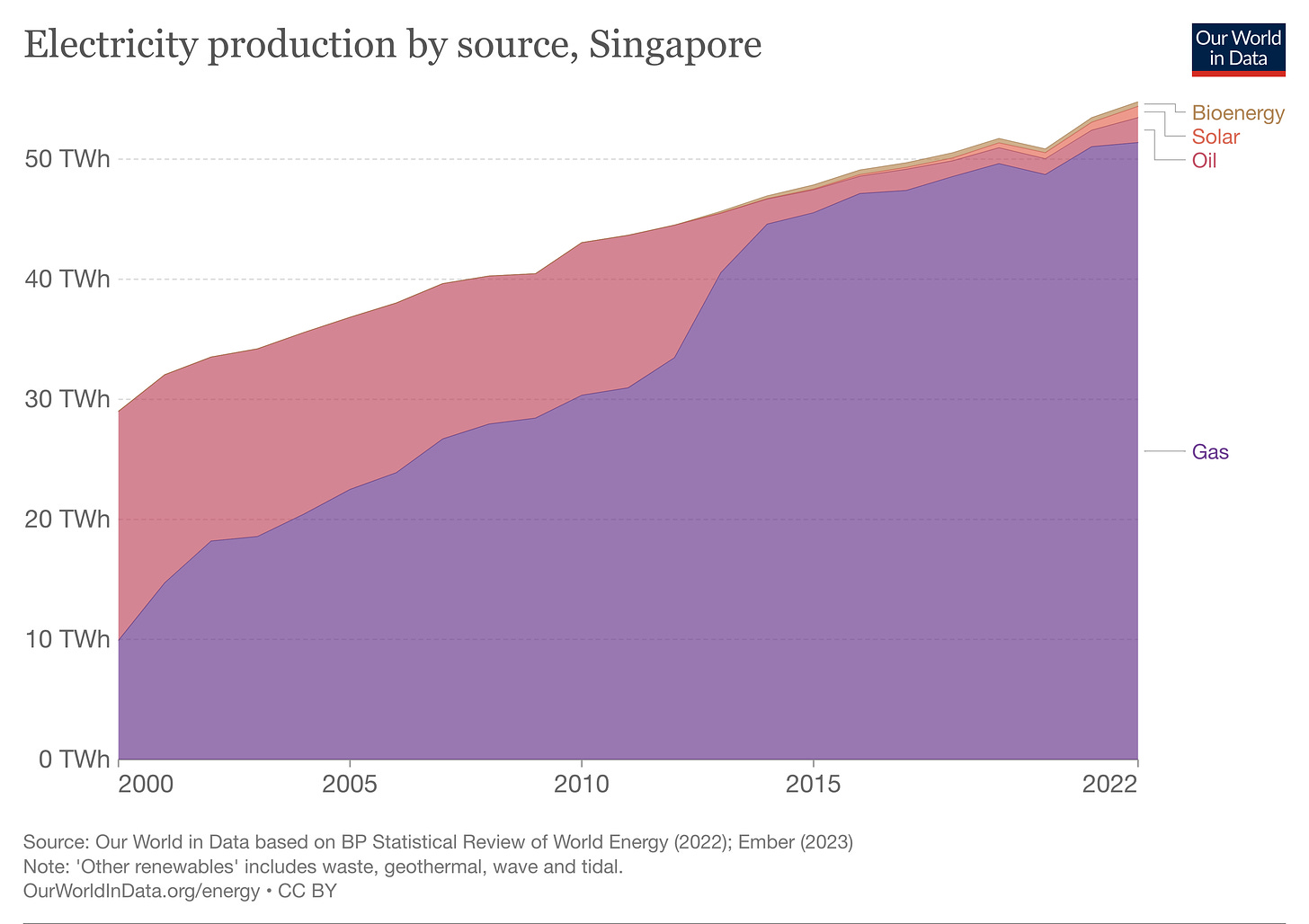
-
An example of fossil-fueled electricity thriving in extremely cold weather:
During the cold week that overwhelmed Texas's solar-and-wind-favoring grid, causing blackouts, the weatherized coal and gas infrastructure in Alberta, Canada was able to handle far colder temperatures than Texas.3
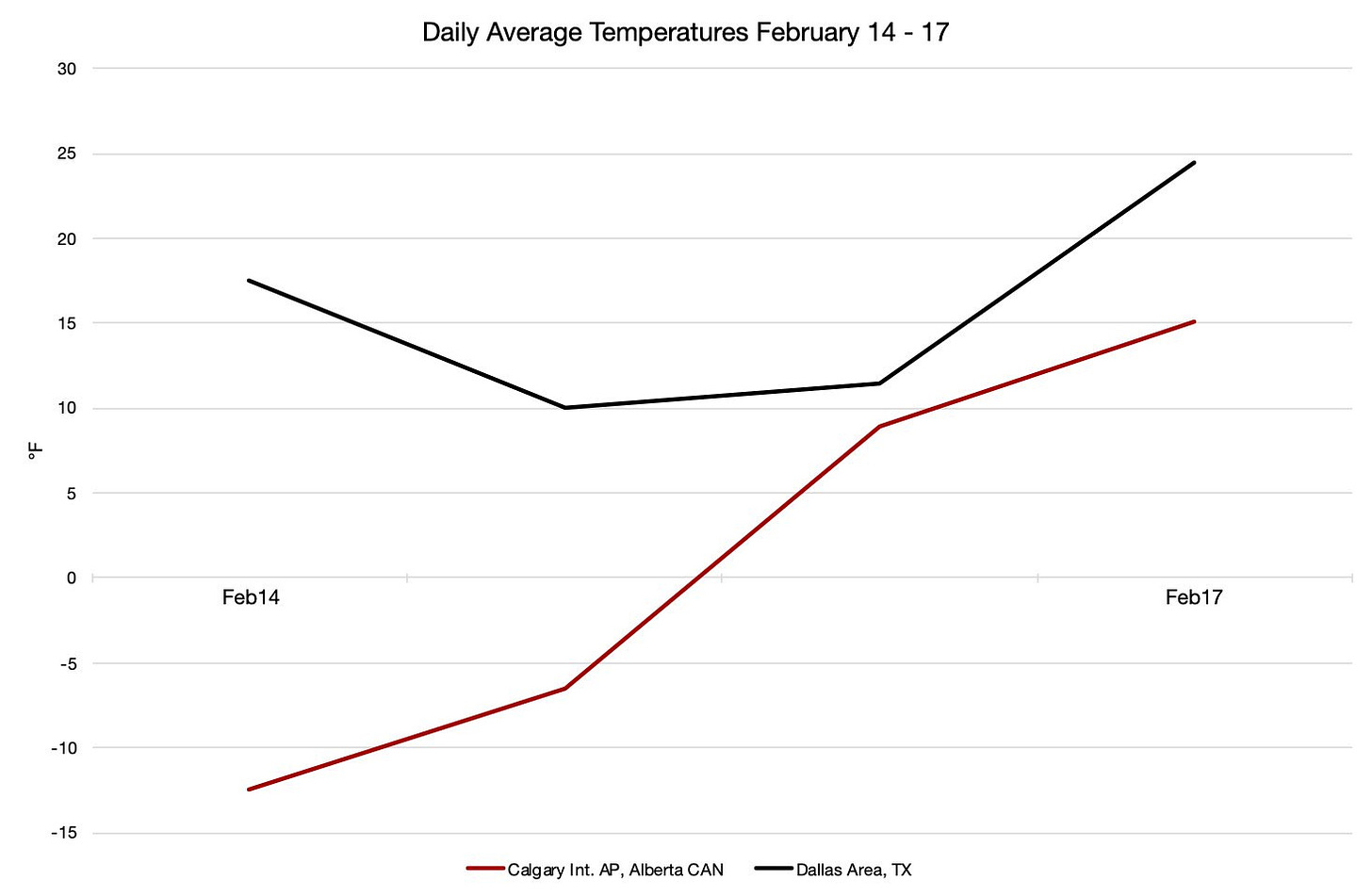
-
No conceivable warming of the planet could cause heat waves that would be a problem for a grid that's committed to reliable electricity. Just invest enough in reliable sources like natural gas, coal, and nuclear, and any necessary weatherization infrastructure.
-
The reason that Texas and the rest of the US are having trouble meeting electricity demand that should be no problem is the obvious: policies that punish reliable fossil fuels and nuclear while privileging unreliable solar and wind.
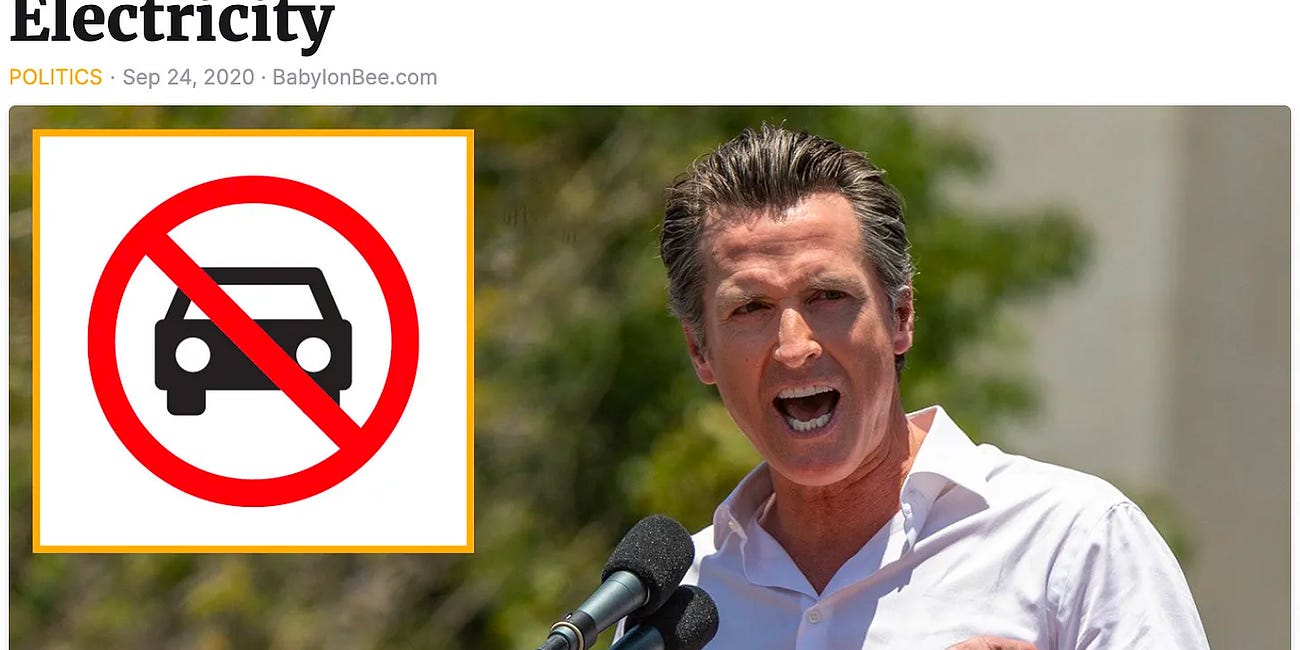
-
Myth: The Texas winter blackouts were a failure of fossil fuels, especially natural gas.
Truth: Fossil fuels perform great in far worse winter weather than Texas had in 2021. Texas blackouts were caused by defunding fossil fuel resiliency to pay for unreliable solar and wind.
https://energytalkingpoints.com/texas-electricity-crisis/ -
Myth: Fossil fuels are making electricity unreliable via “extreme weather”—so we need to use solar and wind.
Truth: Fossil fuels can provide reliable electricity even under the most speculative extremes—whereas unreliable solar and wind alone can’t provide it under any conditions.
-
The latest attempt to pretend that fossil fuels are causing electricity problems that can only be solved by solar and wind is to dishonestly fixate on the moments during a heatwave when solar and wind happen to produce electricity and ignore (the many more) moments they don't.4
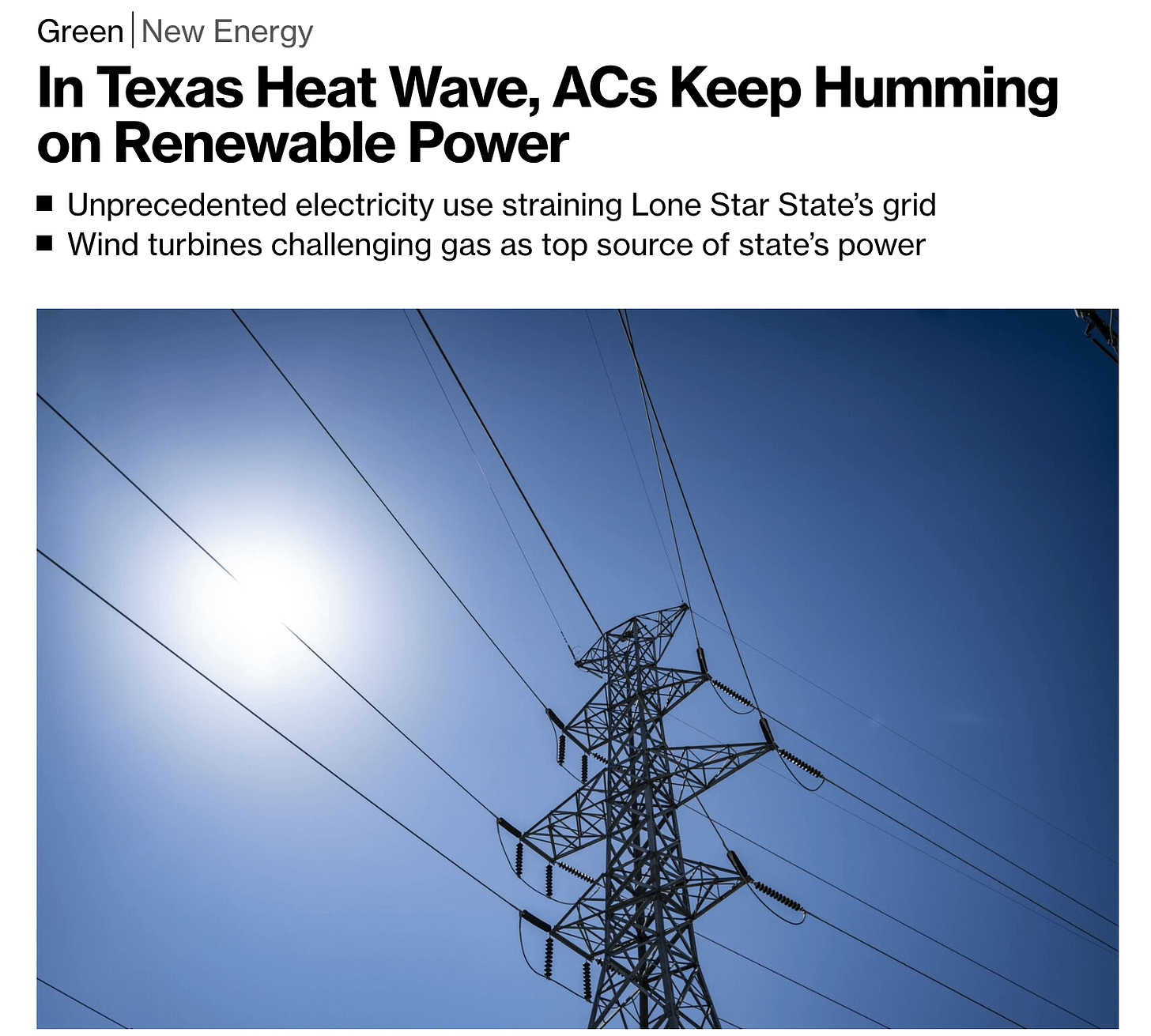
-
Myth: Solar and wind are saving Texas during heat waves because they happened to produce a lot of energy portions of a few hot days.
Truth: Preferences for unreliable solar and wind—which are often low when needed the most—have made Texas embarrassingly vulnerable to heat waves (and cold snaps).
-
Bloomberg: “Texas may be known for its oil and natural gas, but as temperatures breach 100F across the state for a full two weeks, it’s wind and solar power that's helping keep residents cool.”
This “journalism” is false solar and wind propaganda that should be retracted.
-
Bloomberg: “Texas may be known for its oil and natural gas, but... for a full two weeks, it’s been wind and solar power that helped keep residents cool.”
False: Solar and wind provided higher than average unreliable electricity that totally depended on reliable gas, coal, and nuclear.5
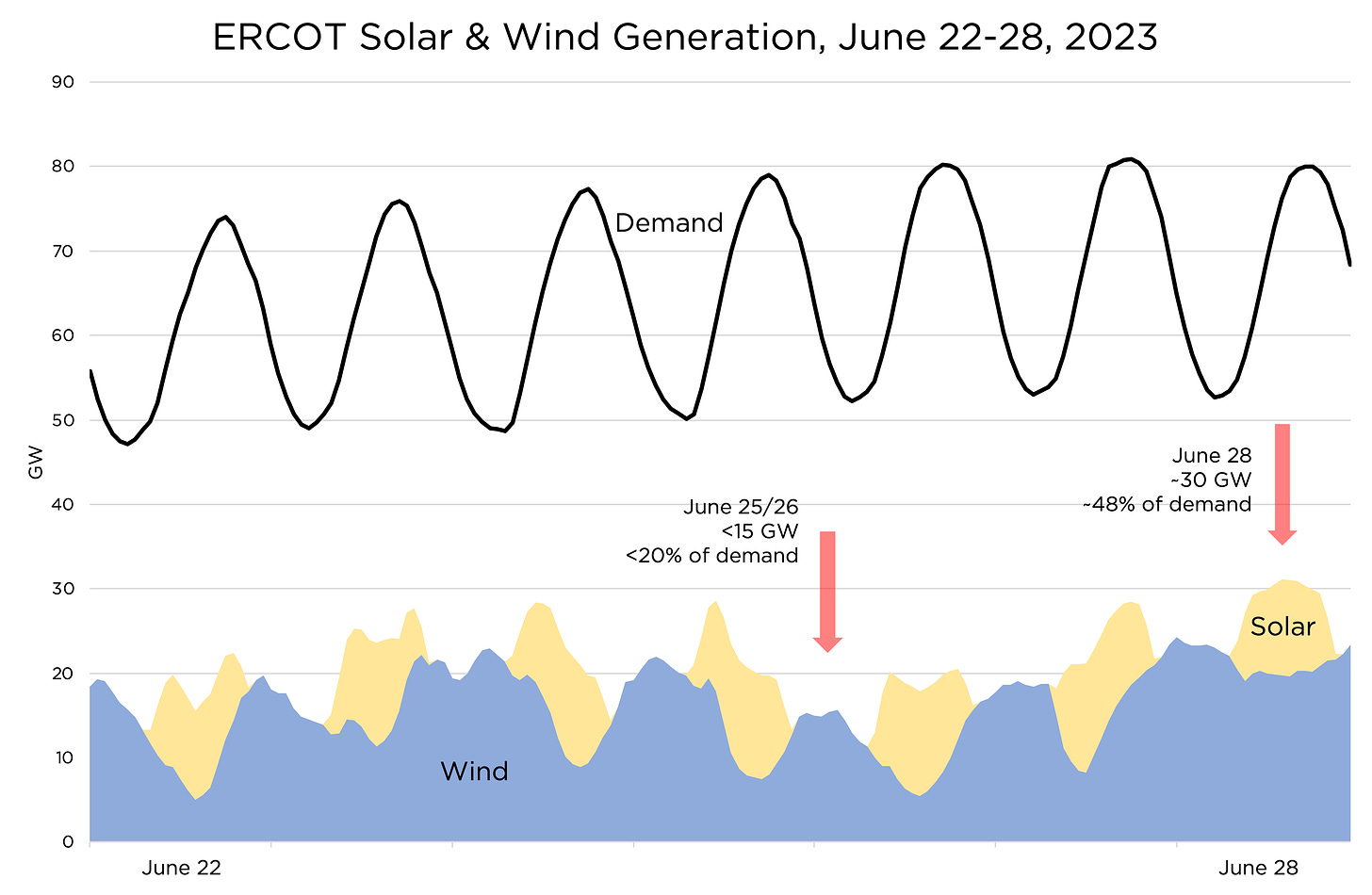
-
Bloomberg: “Green-power sources contributed about a third of total output Wednesday.”
This is blatant cherry-picking: taking an unusually good day of sunlight and wind and pretending it can be generalized. Also, the unreliable output was 100% dependent on fossil-fueled life support.
-
Even during the period of unusually high solar and wind that Bloomberg cherry-picked to claim “Air Conditioners Keep Humming on Renewable Power,” solar and wind at times provided < 20% of Texas electricity. Of course, that portion of the time didn't make the Bloomberg story.
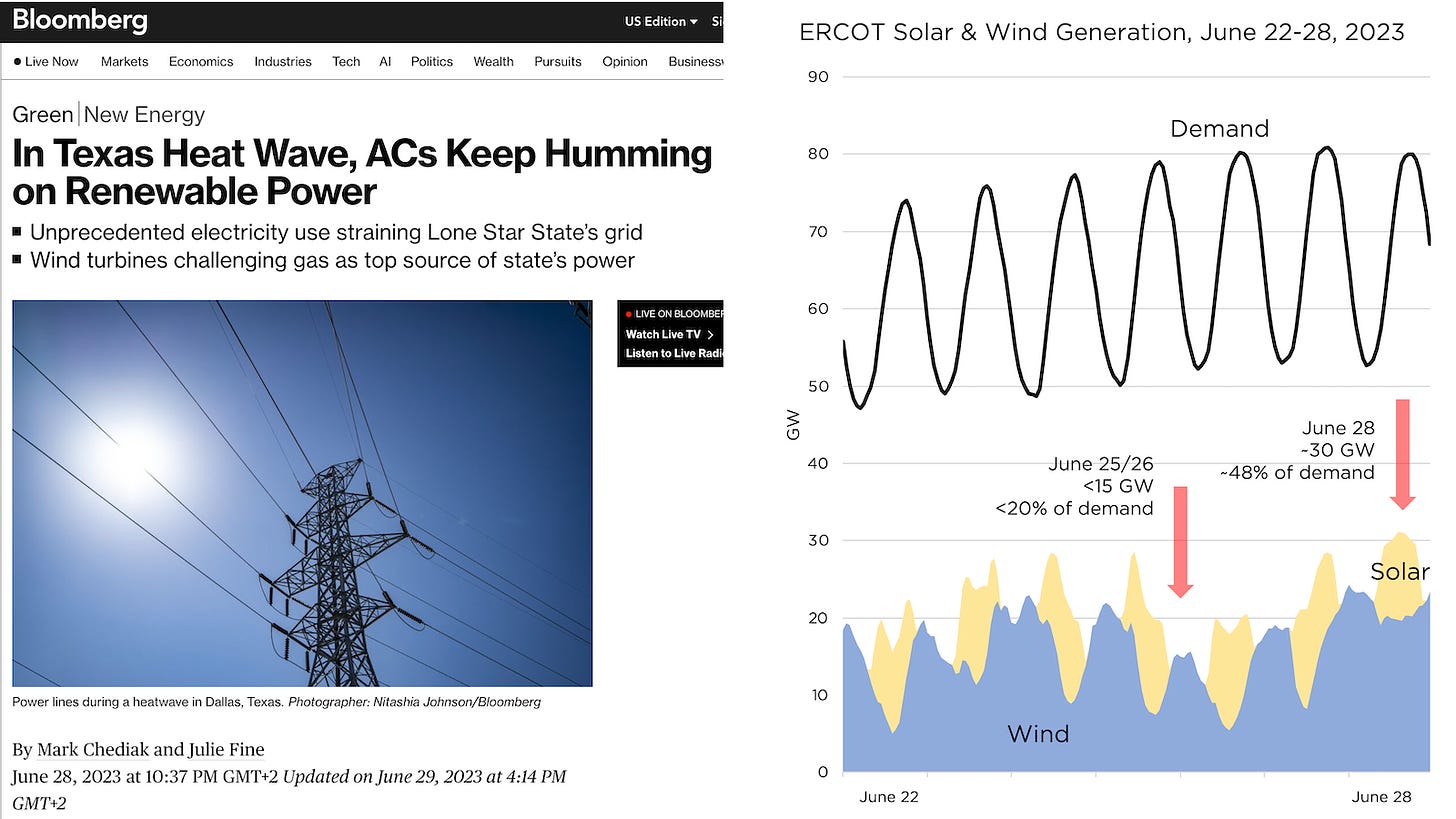
-
Solar and wind haven't supported the Texas power grid even for a day—and can't. Solar goes to zero every hot night, delivering nothing to air conditioning, and wind frequently cycles from <20% to >60% of its supposed “capacity.” (More accurately called “fantasy.”)
-
Bloomberg: “grid officials have only had to ask consumers to conserve energy on one day since extreme temperatures descended on the Lone Star State”
A proper grid focused on reliability should almost never “ask consumers to conserve energy.” Its job is to meet all demand.
-
“We’ve seen record demand, but we’ve also got quite a bit of wind and solar producing. While demand is really high, so is supply.” —Bloomberg “expert” celebrating that solar and wind happen to help meet demand. Reliable sources always match high demand with high supply.
-
Bloomberg: “In just three years, oil-rich Texas has added the solar equivalent of 12 nuclear reactors”
There is no “solar equivalent of nuclear reactors.” Nuclear reactors work all the time, including at night. Solar often doesn't work during the day and never works at night.
-
It is embarrassing that Texas and the US more broadly are having trouble providing enough electricity during heat waves and cold snaps.
And it is despicable that the media are ignoring the anti-reliability policies causing the problem and instead praising unreliable solar and wind.
References
-
Bloomberg - In Texas Heat Wave, Air Conditioners Keep Humming on Renewable Power↩
-
Our World in Data - Singapore: Energy Country Profile
World Population Review - Hottest Countries in the World 2023↩
-
Alex Epstein- Talking Points on the Texas Electricity Crisis
Alberta.ca - Current and Historical Alberta Weather Station Data Viewer
-
Bloomberg - In Texas Heat Wave, Air Conditioners Keep Humming on Renewable Power↩
-
U.S. Energy Information Administration - Hourly Electric Grid Monitor↩
